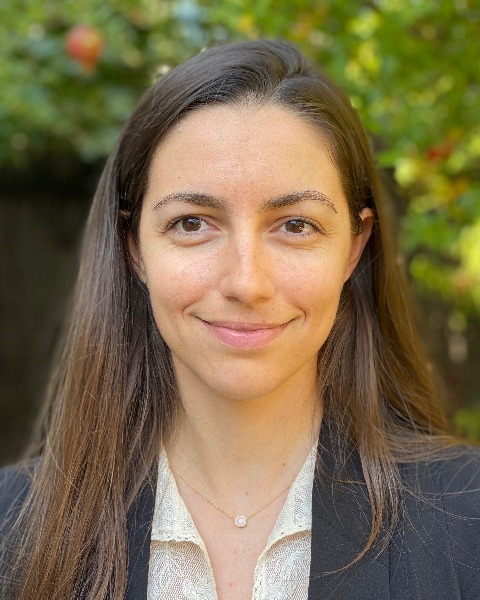Bioinformatics, Computational and Systems Biology
Translational systems modeling
Network Analysis of Anti-Diabetic Compounds Discovers Novel Drug Classes with Unique Biological Functions
Saturday, October 14, 2023
12:45 PM - 1:00 PM PDT
Location: 331 (Center, Level 3)
.jpg)
Anjali Sivanandan (she/her/hers)
Graduate Student
University of California, Los Angeles
Temecula, California, United States
Jennifer L. Wilson, PhD (she/her/hers)
Assistant Professor
University of California Los Angeles
Los Angeles, California, United States
Presenting Author(s)
Primary Investigator(s)
Introduction:: Protein-Protein Interaction (PPI) network methods, such as PathFX, are increasingly popular for predicting drug downstream effects. While these methods would ideally be used proactively during drug-target selection, these algorithms often predict more drug effects than evidence supports, and without sufficient gold standard drug true positive and true negative effects, the translational impact of PPI networks is limited. Previously, we discovered that classifying drugs by downstream proteins instead of traditional drug classes, such as ATC codes, combined with Electronic Health Record (EHR) analysis, could discover new drug effects. We hypothesized that PPI network classification coupled with large-scale observational studies could be used to estimate drug true and false positive effects. To test the feasibility of this approach, we used PPI-predicted proteins downstream of druggable targets to generate novel drug classes and clusters of drug-associated disease genes for anti-diabetic compounds.
Materials and Methods:: We compiled a set of 44 anti-diabetic compounds to analyze and, using PathFX, we were able to generate drug-disease phenotypic predictions for 33 of these compounds. We then grouped these drugs using downstream proteins to generate drug-class-phenotype groups through hierarchical clustering. We additionally used hierarchical clustering to group drug-associated diabetes genes, and used GO enrichment to identify functions associated with the top five diabetes network gene clusters.
Results, Conclusions, and Discussions:: Hierarchical clustering with GO enrichment discovered multiple GO terms shared and unique to each disease-gene cluster. Disease-gene clusters shared GO processes known to be related to diabetes, such as metabolism, including “G protein-coupled receptor activity,” “molecular transducer activity,” “transmembrane signaling receptor activity,” and multiple terms related to “chemokine binding” despite having unique genes, suggesting that drugs may influence these processes from distinct pathways. Hierarchical clustering on drug pathways yielded three drug clusters that were distinct from traditional ATC classifications (Fig. 1). The three drug clusters contained 6, 14, and 13 drugs, respectively. We mapped these drugs to their respective ATC classes and found that 9 of the drugs were classified as A10A (insulins and analogues), 18 drugs were classified as A10B (blood glucose lowering drugs, excl. insulins), 2 drugs were classified as both A10A and A10B, and only 6 drugs had ATC codes other than A10A/A10B. While the majority of the 33 anti-diabetic drugs were classified as A10B, using our pathways approach, these drugs were split into different drug clusters that contained a mix of A10A and other ATC classes. Through hierarchical clustering, we discovered novel drug clusters for anti-diabetic drugs based on shared disease-related genes, resulting in drug clusters that were distinct from traditional drug classes, including chemical or therapeutic-use classes such as ATC classification. Our analysis suggests that while these drugs may have similar clinical outcomes, they may use unique network pathways to influence those outcomes. Future work will extend this analysis to drugs PathFX has predicted to affect diabetes, but are not used clinically as anti-diabetics. Novel observational studies in the EHR can then be conducted to investigate clinical outcomes associated with these drug clusters as a method of validating PathFX predictions and measuring the efficacy of distinct anti-diabetic pathways.
Acknowledgements (Optional): :
References (Optional): :
Materials and Methods:: We compiled a set of 44 anti-diabetic compounds to analyze and, using PathFX, we were able to generate drug-disease phenotypic predictions for 33 of these compounds. We then grouped these drugs using downstream proteins to generate drug-class-phenotype groups through hierarchical clustering. We additionally used hierarchical clustering to group drug-associated diabetes genes, and used GO enrichment to identify functions associated with the top five diabetes network gene clusters.
Results, Conclusions, and Discussions:: Hierarchical clustering with GO enrichment discovered multiple GO terms shared and unique to each disease-gene cluster. Disease-gene clusters shared GO processes known to be related to diabetes, such as metabolism, including “G protein-coupled receptor activity,” “molecular transducer activity,” “transmembrane signaling receptor activity,” and multiple terms related to “chemokine binding” despite having unique genes, suggesting that drugs may influence these processes from distinct pathways. Hierarchical clustering on drug pathways yielded three drug clusters that were distinct from traditional ATC classifications (Fig. 1). The three drug clusters contained 6, 14, and 13 drugs, respectively. We mapped these drugs to their respective ATC classes and found that 9 of the drugs were classified as A10A (insulins and analogues), 18 drugs were classified as A10B (blood glucose lowering drugs, excl. insulins), 2 drugs were classified as both A10A and A10B, and only 6 drugs had ATC codes other than A10A/A10B. While the majority of the 33 anti-diabetic drugs were classified as A10B, using our pathways approach, these drugs were split into different drug clusters that contained a mix of A10A and other ATC classes. Through hierarchical clustering, we discovered novel drug clusters for anti-diabetic drugs based on shared disease-related genes, resulting in drug clusters that were distinct from traditional drug classes, including chemical or therapeutic-use classes such as ATC classification. Our analysis suggests that while these drugs may have similar clinical outcomes, they may use unique network pathways to influence those outcomes. Future work will extend this analysis to drugs PathFX has predicted to affect diabetes, but are not used clinically as anti-diabetics. Novel observational studies in the EHR can then be conducted to investigate clinical outcomes associated with these drug clusters as a method of validating PathFX predictions and measuring the efficacy of distinct anti-diabetic pathways.
Acknowledgements (Optional): :
References (Optional): :
